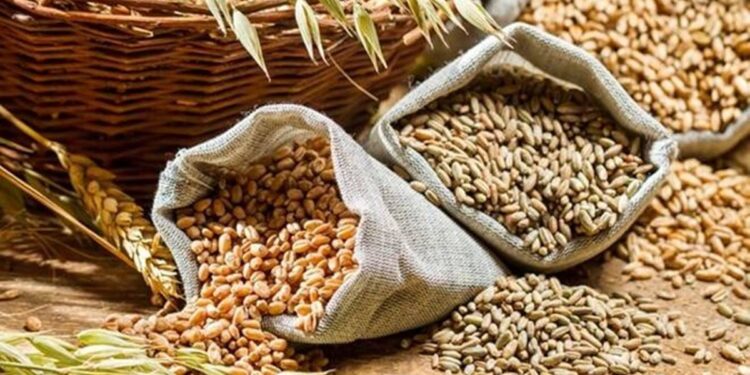 Food Corporation of India (FCI) and state agencies have purchased nearly 26 MT of wheat as on April 28 in ongoing season, as against 7.76 MT during corresponding period of last year.
Food Corporation of India (FCI) and state agencies have purchased nearly 26 MT of wheat as on April 28 in ongoing season, as against 7.76 MT during corresponding period of last year.After the India Meteorological Department (IMD) predicted a ‘normal’ monsoon, the government has set a record target to raise foodgrain production by 2% (y-o-y) during 2021-22 crop year, starting July. With prices of all rabi crops currently ruling either near or above the minimum support prices (MSPs) despite bumper harvest, the government can safely bet on next kharif crops to increase the overall agriculture growth and boost the rural economy.
Releasing the target at the annual kharif conference, agriculture commissioner SK Malhotra said the target of total food grains production for 2021-22 is set at a record 307.31 million tonne (MT), comprising 151.43 MT in kharif season and 155.88 MT during rabi. In 2020-21, production was 303.34 MT, against the target of 301 MT.
For 2021-22, the target for rice production has been fixed at 121.1 MT, wheat at 110 MT, pulses at 25MT, coarse cereals at 51.21 MT and oilseeds at 37.5MT.
Agriculture minister Narendra Singh Tomar said that higher production targets for pulses and oilseeds are the necessity of the nation to reduce our dependency on import and to achieve the dream of Aatmanirbhar Bharat. Expressing concerns over shortage of oilseeds and pulses, Tomar requested state governments to work on mission mode to overcome the demand-supply mismatch.
The IMD has predicted this year’s monsoon rainfall to be 98% of the long period average (LPA) of 88 cm. The monsoon season of June-September has over 70% share in India’s annual rainfall and is considered key to the success of agriculture sector, as almost 52% of the agricultural land is rain-fed.
According to the weather bureau, rainfall between 96% and 104% of the LPA is considered ‘normal’ and 90-96% of the LPA is categorised as ‘below normal’. The agency will release the region- and month-wise forecast for 2021 in either the last week of May or the first week of June.
Continuing thrust on higher cereals output over the last six years has proved the government’s reluctance to take any chance, even though it has been running schemes for Punjab and Haryana farmers to shift from water-guzzling paddy crop. Though the NDA government declared a shift in the country’s agriculture policy from production centric to income centric by announcing a target to double farmers’ income by 2022, the continuing thrust on higher (than requirement) procurement of paddy and wheat under MSP operation has been a burden on the exchequer with continuous rise in food subsidy.
Food Corporation of India (FCI) and state agencies have purchased nearly 26 MT of wheat as on April 28 in ongoing season, as against 7.76 MT during corresponding period of last year, according to food ministry data.
The government has set a target to buy 42.74 MT for the central pool during 2021, which is nearly 10% more than actual quantity purchased last year. According to FCI, the official reserves had 27.3 MT of wheat as on April 1, which is nearly four times the buffer norm of 7.5 MT.
Do you know What is Cash Reserve Ratio (CRR), Finance Bill, Fiscal Policy in India, Expenditure Budget, Customs Duty? FE Knowledge Desk explains each of these and more in detail at Financial Express Explained. Also get Live BSE/NSE Stock Prices, latest NAV of Mutual Funds, Best equity funds, Top Gainers, Top Losers on Financial Express. Dont forget to try our free Income Tax Calculator tool.
![]() Financial Express is now on Telegram. Click here to join our channel and stay updated with the latest Biz news and updates.
Financial Express is now on Telegram. Click here to join our channel and stay updated with the latest Biz news and updates.













